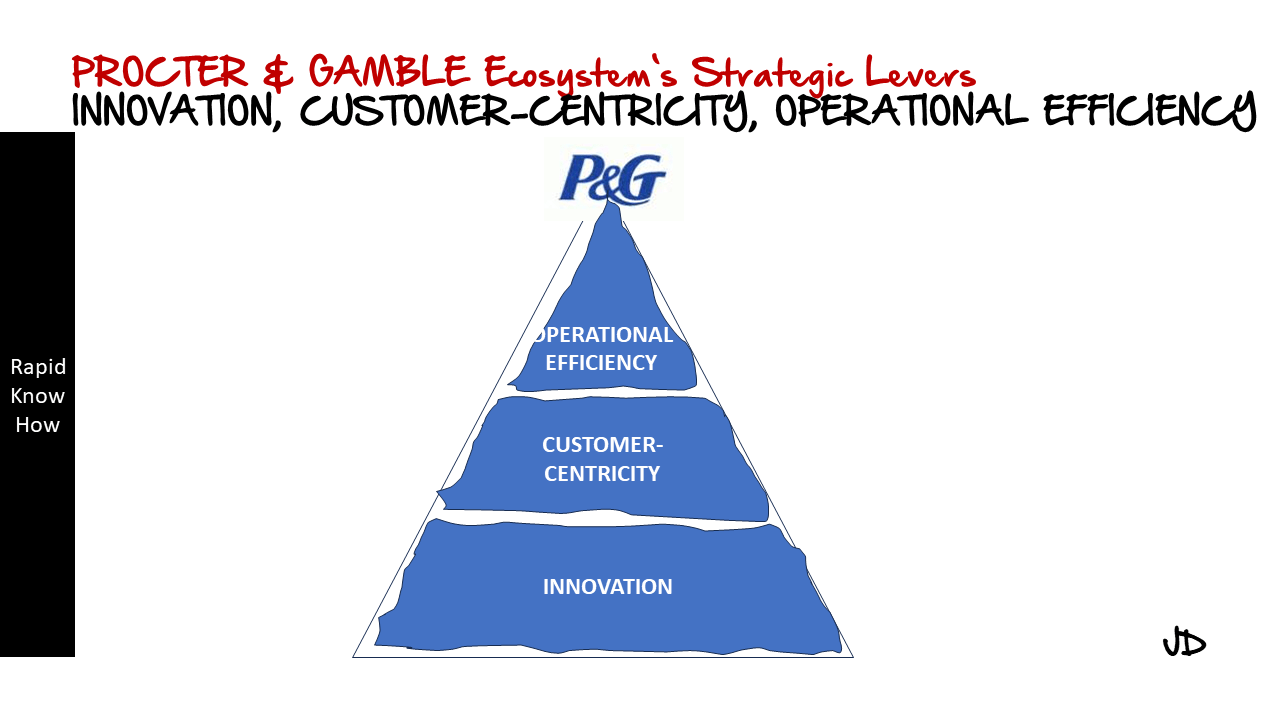Cracking the Procter & Gamble Ecosystem: An In-depth Analysis
Procter & Gamble (P&G), a multinational consumer goods corporation, has established a robust ecosystem that has been instrumental in its global success. This ecosystem is designed around a strategic framework that focuses on innovation, customer-centricity, and operational efficiency.
Design of the P&G Ecosystem:
The P&G ecosystem is designed to be a holistic, interconnected network that encompasses all aspects of the business, from product development to marketing and distribution. It is built on three core pillars:
1. Innovation: P&G invests heavily in research and development to create innovative products that meet consumer needs. The company collaborates with external partners, including suppliers, universities, and research institutions, to drive innovation.
2. Customer-Centricity: P&G places a strong emphasis on understanding and meeting customer needs. The company uses data analytics to gain insights into consumer behavior and preferences, which informs product development and marketing strategies.
3. Operational Efficiency: P&G strives for efficiency in all aspects of its operations. The company leverages technology and process optimization to reduce costs, improve productivity, and enhance product quality.
How the P&G Ecosystem Works:
The P&G ecosystem operates as an integrated whole, with each component playing a critical role in the company’s success.
Innovation is at the heart of the ecosystem. P&G’s R&D teams work closely with external partners to develop new products and improve existing ones. These innovations are then tested in select markets before being rolled out globally.
Customer-centricity is another key aspect of the ecosystem. P&G uses advanced data analytics to understand consumer needs and preferences. This information is used to inform product development and marketing strategies, ensuring that P&G’s offerings resonate with consumers.
Operational efficiency underpins the entire ecosystem. By optimizing processes and leveraging technology, P&G is able to deliver high-quality products at competitive prices.
Strategic Advantage of the P&G Ecosystem:
The strategic advantage of the P&G ecosystem lies in its ability to drive innovation, meet customer needs, and achieve operational efficiency.
Innovation gives P&G a competitive edge by enabling it to continually refresh its product portfolio and stay ahead of market trends. By collaborating with external partners, P&G can tap into a broader pool of ideas and expertise.
Customer-centricity allows P&G to build strong relationships with consumers and create products that meet their needs. By using data analytics to gain insights into consumer behavior, P&G can make informed decisions about product development and marketing.
Operational efficiency enhances P&G’s profitability by reducing costs and improving productivity. This allows the company to invest in innovation and customer-centric initiatives while maintaining competitive pricing.
In conclusion, cracking the Procter & Gamble ecosystem involves understanding its design based on innovation, customer-centricity, operational efficiency; how it works as an integrated network driving product development through research collaborations; using data analytics for informed decision-making; optimizing processes for cost-effectiveness; all these elements provide strategic advantages that have contributed significantly towards making Procter & Gamble a global leader in consumer goods.
